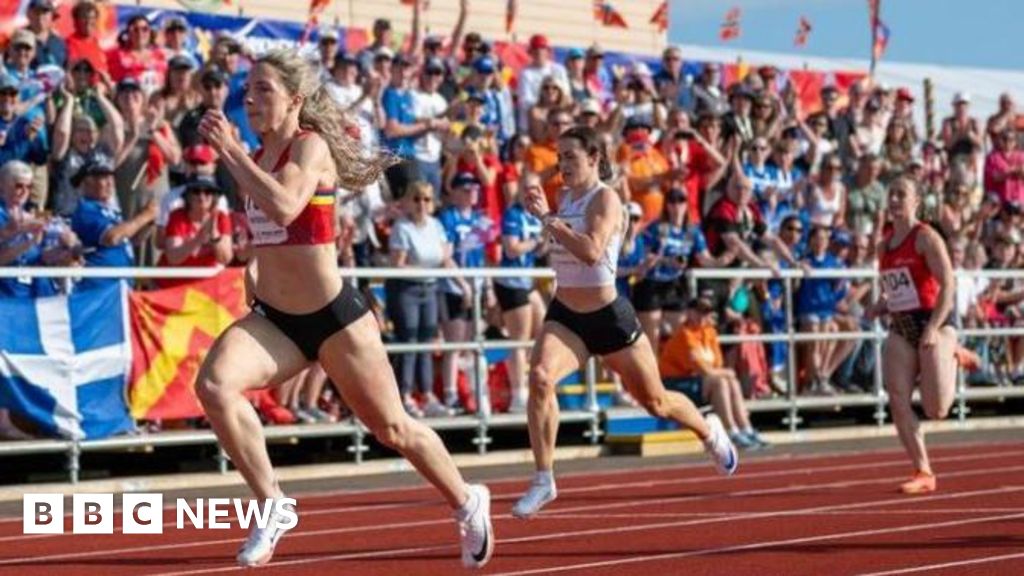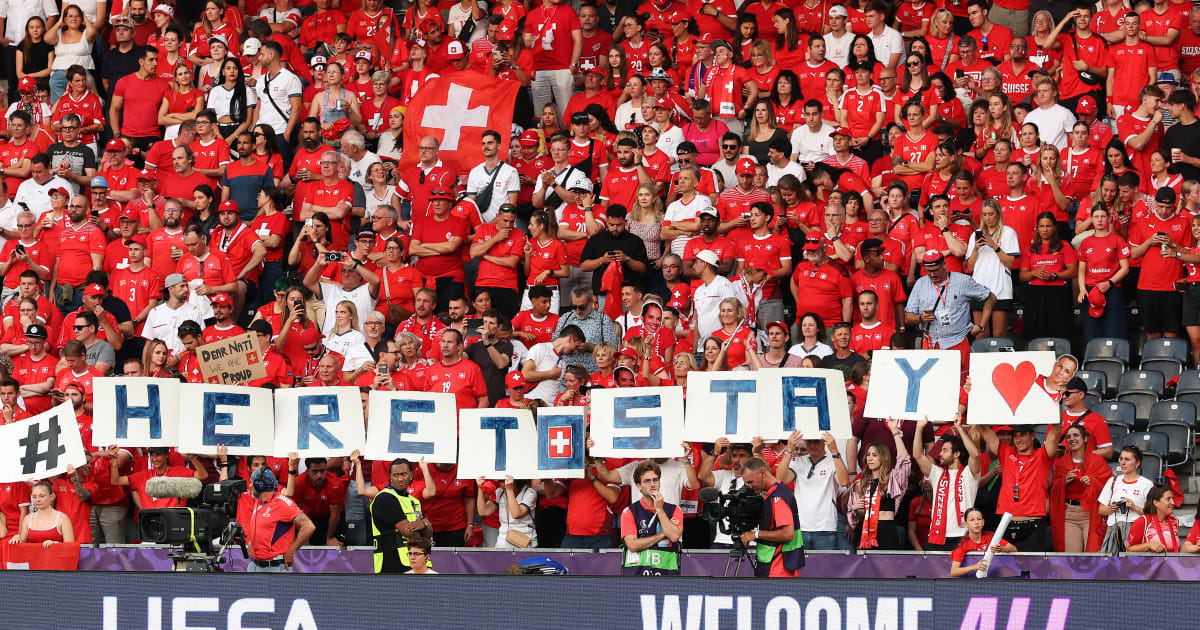The holiday is over. Now it’s time to run. Welcome to football’s pre-season running tests

There are no footballs. Just cones, discs and poles, and a group of players gripped by a mixture of nerves and anxiety on the start line.Welcome to the pre-season running test.Over the past couple of weeks, clubs across Europe have been putting players through their paces by using a variety of running exercises to measure fitness levels following the off-season break.AdvertisementAlthough the bleep test that gave a generation of footballers nightmares across the 1980s and 1990s has largely disappeared from view, modern alternatives still require players to tune in to the audio while showing a combination of physical endurance and mental resilience.The soundtrack for some of the other tests is coaches shouting “dig in” and “keep pushing” – familiar language to anyone who has endured the torture of pre-season running – as the players race against their team-mates and the clock.With the help of some expert insight, The Athletic has taken a closer look at half a dozen different pre-season running tests that have been used in recent years.Forget the boots. It’s time to get your trainers on…1. Six-minute maximal running test (6RMT)“Go all in,” Arne Slot says. “I’m expecting you to win.”Liverpool’s head coach was looking at Jarell Quansah, who was taking part in a pre-season run alongside Conor Bradley and Sepp van den Berg last summer that signalled a shift in approach at the club. The lactate test that had been such a key feature of Jurgen Klopp’s reign was replaced with a straightforward (to explain, at least) exercise that required players to run as far as possible in six minutes.Interesting to see Liverpool switching from the Lactate Test to a 6-Minute Race Test (6MRT) to obtain the players’ max aerobic speed. – 6 minutes around a 400m race track– as fast as possible– distance covered is the marker Generally looking for somewhere between 1.5-2km. pic.twitter.com/0vb0AyLd1C — STATSports (@statsports) July 6, 2024Gareth Sandford, an Olympic, college and professional sport scientist who has recently acted as a consultant for Manchester City and the England Football Association, believes the ‘6MRT’ has a lot of benefits, starting with the fact that six minutes is, roughly, the duration you can maintain VO2 max, the highest rate at which your body can use oxygen.“If you run shorter than that, you place greater emphasis on the anaerobic physiology, which makes the training pace much harder than you want it to be when you do your conditioning session,” he explains.To illustrate his point, Sandford compares the anaerobic energy reserve (for sustained high-intensity effort) to a flame flickering and burning down a matchstick. “With a six-minute run, you can’t just rely on the anaerobic matchstick; you have to have the aerobic side, too, which the six-minute run reveals.”AdvertisementWith a run this long, there is always a danger that players will go off too quickly or even too slowly, distorting the results – something Sandford says can be avoided by “clamping” the first two minutes (he highlights how Brentford used a pacemaker on their recent two-kilometre running test to solve this issue).“Another advantage of this six-minute test is that you can also estimate something called your critical speed, which is this five or six out of 10 effort when you’re not burning the match,” Sandford adds. “The faster the speed you can go without burning the match, the fitter aerobically you are. You can calculate that from the six-minute run, and it’s those two bits together that can help you improve your aerobic condition over time and over the season.”For the record, Bradley beat Quansah.Conor Bradley celebrates scoring against Chelsea in January 2024 (John Powell/Liverpool FC via Getty Images)2. 1km (10 x 100m)Thomas Frank is a big fan, as the Tottenham Hotspur players just discovered. “I don’t know if I’m a modern coach or not sometimes, but we started running today,” the new Spurs head coach said on his first day of pre-season training. “Old school is still good school.”By running, Frank means covering the best part of 10 lengths of the pitch and back — 1,000 metres in total — as quickly as possible. “If they did it well enough, they’re below three minutes 15 seconds,” he said.Some people will look at that distance and time and think it should be fairly comfortable for a professional footballer. But all the turns, including decelerating and then accelerating away, make it much more challenging.“To go 10 times around the pole is just an annoying part of this game,” the Brentford midfielder Vitaly Janelt said when he did the test under Frank three years ago. “That’s the hardest part.”Janelt said he struggled to sleep the day before the test because he was so worried about it.Mads Bidstrup presumably had no such worries. A natural runner, Bidstrup came out on top more than once during his time at Brentford. In fact, two years ago, shortly before he moved to Red Bull Salzburg, Bidstrup finished the test in an outstanding time of two minutes and 57 seconds.Watching the 1k test is a lot better than doing the 1k test pic.twitter.com/WCGs1VguAE — Brentford FC (@BrentfordFC) July 6, 2023Watching the footage of the 1km test at Spurs last week and listening to the encouragement given to 19-year-old midfielder George Abbott, Djed Spence, and the rest of the squad served as a reminder that the coaches’ rhetoric never changes.“Come on, stay with it!”“Keep pushing, Djed!”“Dig in, mate!”3. BroncoTraditionally associated with rugby, where it has long been a staple of the All Blacks’ fitness testing, the Bronco started to make its way into the football world over the past couple of years.Bristol City set up the test at pre-season training both this summer and last summer, and other clubs have followed suit.Advertisement“As a reminder, you’re going red and back, yellow and back, orange and back, five times continuously,” Andy Kavanagh, Bristol City’s head of performance, tells the players in the footage that the Championship club released in 2024.“Give everything that you can, get back as quickly as you can. Boys resting, give as much encouragement as you can.”The red cone is 20m away, the yellow 40m and the orange 60m, which means each set of three shuttles is 240m in total. Five times through equals 1,200m. Essentially, the players are completing 15 “doggies”, which is mentally draining because of the repetitive nature of the runs, not to mention the physical demands of constantly turning.“I use the Bronco for a couple of reasons, one being that it’s easy for the lads to understand,” Kavanagh says. “But the main one for me is that from the score they get, I can predict their max aerobic speed, and that is something we will then use throughout pre-season to prescribe different types of runs that are more specific to individuals.”Kavanagh set the Bristol City players a target to be inside four minutes and 30 seconds.To put that into some wider context, last year Cam Roigard recorded the joint-quickest time of any New Zealand rugby player, equalling the 4:12 that Beauden Barrett set in 2020.Anis Mehmeti, Bristol City’s Albania international, ran that exact time last summer and went four seconds quicker this year.Bristol City’s Anis Mehmeti, a match for the New Zealand rugby union team (Michael Steele/Getty Images)4. Single-double-single (SDS)This is an intermittent running test designed by Paul Balsom, who spent more than 25 years working as performance manager for Sweden’s men’s national team.The SDS takes about 18 minutes to complete and requires you to switch on while running (as well as while reading now!) to understand what it entails.The SDS running test 😮💨🏃 pic.twitter.com/qsuiQfQXNL — Swansea City AFC (@SwansOfficial) June 30, 2025With the help of an audio track that controls the pace with beeps at every marker, each individual rep consists of three runs: a 12-second 60m single run to start (A to B in the graphic below) followed by a three-second rest; a 16-second 72m double run (B to C to B) followed by another three-second rest; and finally a 12-second 60m single run back to the start (B to A). The players then have a 12-second rest before repeating the rep. Repeating it a lot, actually.Swansea did 16 reps in total: three reps for the warm-up at a more gentle pace and then two blocks of five reps following the times above, with a 72-second rest between the two blocks.To finish – and this is where it gets brutal – the players did two continuous reps at the same pace as before, but this time, without the three-second rest between the three runs. Instead, there was just a 10-second rest between the two reps. After the second of those ‘continuous’ runs, the players had a six-second rest before completing a final SDS one-rep time trial – 192m in total – flat out, with no pacing. The best times for that last segment were around the 30-second mark.AdvertisementPatrick Orme, Swansea’s head of performance, explains: “Because there are different blocks of work, you can look at how quickly players recover in between the two blocks, you can look at how their heart rate responds to the different reps that they’re doing, and then at the end of the test there is this time trial, so you get a score and that helps to get the lads to engage with it.”5. GaconThis is a test that is synonymous with Mauricio Pochettino, the head coach of the U.S. men’s national team. Invented by Georges Gacon, a French fitness coach who started in athletics and worked with middle-distance runners before moving into football with Paris Saint-Germain initially, this test is also built around shuttle runs.“To start with, the players have 45 seconds to cover 150 metres, with 15 seconds to rest,” Pochettino, who signed for PSG as a player after Gacon departed, explained in his book. “In each subsequent 45-second rep, they have to run 6.25 metres further, with the intensity steadily increasing.”Requiring mental strength as well as aerobic power, the Gacon is a gruelling test to take part in as well as a nightmare for a fitness coach to set up because of all the incremental disc markers, which require a measuring tape and the patience of a saint.The players can run until failure or, depending on the coach’s mood, complete a designated number of shuttles.“We did the Gacon one day and we were meant to do 10 runs, but we got to the eighth and the manager — I still don’t know if he was doing a mental trick on us — said we could stop if we wanted,” Chelsea’s Ben Chilwell told The Athletic in 2023.“Everyone was on their knees after the eighth one and he (Pochettino) said, ‘If everyone completes the next two, I’ll take you all out for dinner’.”The Chelsea players chose to complete those last two runs, but at the time of Chilwell’s interview, they were still waiting for their meal ticket.Mauricio Pochettino has used the Gacon test at different clubs, including Chelsea in 2023 (Darren Walsh/Chelsea FC via Getty Images)6. 30-15 Intermittent fitness test (30-15 IFT)“A lot of the tests you mention, they are supposed to bring players to exhaustion,” Martin Buchheit, who invented the 30-15 IFT, says. “But the problem is you need to be able to pace yourself and that’s very difficult. The 30-15 gives you the pace when you’re running – you just have to let yourself be guided by the audio, by the beeps.”AdvertisementIn contrast to the dreaded bleep test from yesteryear, the distance gets progressively longer in the 30-15 IFT, rather than staying the same. That’s because as well as the speed increasing by 0.5 kilometres per hour at each stage (8km/h is usually the starting pace), every run is 30 seconds. Another key difference is that at the end of each run, there is a 15-second recovery period before walking towards the next starting point, which is identified by the audio.The area is 40 metres in length (the width of the penalty area), which means players are regularly turning, with the beeps that sound at either end, as well as in the middle, providing benchmarks to meet the requisite speed. Fail to hit three beeps in succession (there is a 3m zone next to each line marker) and the test is over.“The 30-15 is meant to replicate those intermittent efforts (in sport),” Buchheit says. “You can have players with the same engine at the start, but one has a better recovery than another, so he will do better on the 30-15.”Carlos Baleba is a star pupil. While at Lille, the Brighton & Hove Albion midfielder reached a speed of 22.5km/h, by which time he had run the best part of 3km.“The final speed is an overall product of many variables that are not just oxygen intake but also your ability to recover, your ability to turn and change direction,” Buchheit adds.He smiles. “You’re writing about football, of course, but it’s worth highlighting that the beasts, and all the record holders, are from Australian rules football.”(Illustration: Kelsea Petersen; Tom Goyvaerts / BELGA MAG / Belga via AFP; Graphics: Drew Jordan)









